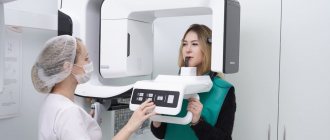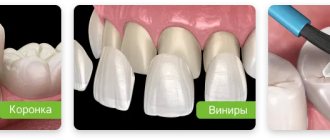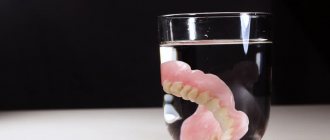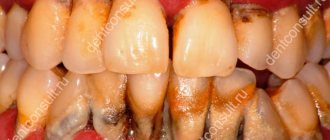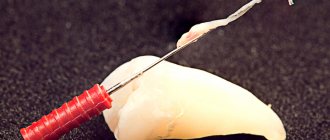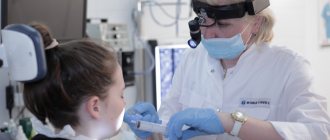There are contraindications. Specialist consultation is required.
A furuncle is a purulent inflammation of the hair follicle. It develops due to staphylococcal infection entering the sebaceous glands due to microtraumas, non-compliance with hygiene rules, excessive sweating, allergies, and decreased immunity. By the nature of the rashes there are single and recurrent, in form single and multiple (furunculosis).
General information
Of all patient visits to a surgeon, 70% are for purulent diseases of soft tissues. Patients present with a mild to moderate infection— boil , hidradenitis , abscess , or carbuncle —referring to these conditions as “abscesses.”
In most cases, these are advanced processes due to “wait-and-see” tactics or unsuccessful self-medication. Most patients turn to the surgeon on the 4-6th day after the first symptoms of inflammation appear, which indicates a frivolous attitude towards their health. Wikipedia gives the following definition: “an abscess (abscess) is a limited accumulation of pus in organs or tissues that occurs during inflammation caused by pyogenic microbes.” Purulent inflammation is most often caused by streptococci and staphylococci, affecting not only the skin and subcutaneous tissue, but also the organs of the abdominal cavity and mediastinum. The high incidence is associated with the widespread distribution of staphylococci and streptococci . Microbes penetrate through the skin and mucous membranes, which are damaged, multiply and cause inflammation with the formation of a purulent focus. Inflammation develops when the body's defenses and sensitivity to pathogens decrease.
Why are boils dangerous?
When boils are treated incorrectly, self-medication, attempts to squeeze out an abscess, or when it is injured (for example, by shaving), complications often develop. These include:
- phlegmon and soft tissue abscesses - extensive purulent lesions;
- thrombosis – blockage – of lymphatic and venous tracts;
- septic phlebitis, lymphangitis and lymphadenitis - inflammation of blood and lymphatic vessels, lymph nodes.
The entry of the pathogen into internal organs and the circulatory system sometimes results in a life-threatening condition - sepsis. When self-medicating boils on the face, the infection can enter the brain and cause meningitis.
Pathogenesis
In the pathogenesis of purulent inflammation, a decrease in antibacterial resistance, both general and local, is important. The integrity of the skin and the bactericidal properties of the secretion of the sweat and sebaceous glands prevent the introduction of pyogenic flora. If these conditions are violated, purulent-infectious inflammation develops. It consists of successive phases. histamine , prostaglandin , serotonin , etc.) in response In the exudative phase, under the influence of histamine, the liquid part of the plasma and proteins enter the intercellular spaces. During the infiltrative phase, tissues are saturated with lymphocytes and macrophages. As a result of exudation and infiltration, interstitial pressure increases, which significantly disrupts the condition of tissues, metabolic processes in them and reduces resistance to the effects of microorganisms. Then follows the immunological phase - the cellular and humoral response.
Inflammatory infiltrates have different outcomes, depending on the cellular composition of the infiltrate. Sometimes infiltrates resolve, but in most cases, with leukocyte infiltrates, lysosomal enzymes are released, which melt the tissue with the formation of pus - a purulent focus appears. Over time, areas of softening appear in the purulent focus and the abscess opens on its own or is opened surgically. The process ends with the reparative phase - the formation and growth of granulation tissue, which fills the resulting tissue defect as a result of purulent melting. With shallow lesions, no trace remains on the skin, but with deep lesions, a scar is formed.
What diagnoses can fall into the category of “abscess on the gums”?
- Exacerbation of chronic periodontitis;
- Exacerbation of chronic gingivitis (periodontitis).
Suppuration also occurs after tooth extraction (alveolitis), with cancer, with fractures (osteomyelitis) - these conditions are also accompanied by the release of pus, but here the patient (in most cases) knows about the cause (a tooth was recently removed, there was a fracture, etc.). d.). Sometimes manifestations of diseases of the mucous membranes are confused with ulcers - aphthous stomatitis, herpetic stomatitis and others, which also appear as a white (white-yellow/gray) area of the mucous membrane with a red rim around, but as such there is no pus there, and the causes of these conditions are also different. Therefore, we will talk more about periodontitis and periodontitis.
Classification
According to localization, purulent infection can be:
- Skin and subcutaneous tissue of the arms, torso, legs.
- Skull skin.
- Pleura and lungs.
- Mediastinum.
- Abdominal organs.
- Pelvic organs.
- Bones and joints.
The most common purulent infection of the skin and its appendages (hair follicles, sebaceous glands, nails), as well as subcutaneous tissue (the lesion is located under the skin). The localization of purulent foci can vary - on the head in the hair, on the ear or on the lip.
Pustular skin diseases are the most common dermatoses. Purulent sores on the body ( pyodermitis ) are caused by staphylococci and streptococci. The greatest contamination with staphylococci is in the folds of the skin and subungual spaces.
There are:
- Superficial forms of purulent skin diseases ( ostiofolliculitis , folliculitis ).
- Deep ( furuncle , carbuncle , hidradenitis ).
Staphylococcal lesions are always associated with the sebaceous gland or sweat gland, hair follicle. The lesion spreads deeper, local and general temperature rises and creamy yellow-green pus forms. Streptococcal lesions are superficial purulent lesions of smooth skin that enlarge through peripheral growth.
Ostiofolliculitis is the mildest form of staphyloderma affecting the tissue near the hair shaft. It occurs in men in the mustache and beard area and is single or multiple in nature. The process begins with the appearance of a small red papule, in its place a yellow abscess forms. After 3 days it becomes covered with a dirty yellow crust, which falls off with the formation of a residual pink spot.
Folliculitis is an inflammation of the hair follicle with the formation of pus. Unlike ostiofolliculitis, the sores in this case are surrounded by a red, inflamed cushion and are painful. Over time, a pustule forms, which opens and pus is released, forming erosion and a crust. The infiltrate resolves or a scar forms.
A furuncle is an inflammation of the hair follicle, sebaceous gland and subcutaneous tissue. The cause of the disease is a staphylococcal infection. Most often, boils form in areas that sweat, chafe, or are covered in vellus hair (legs, neck, face, and underarms). A boil often develops from folliculitis.
Furunculosis is a recurrent form of boil. There are local furunculosis (rashes in a limited area) and disseminated (elements scattered throughout the body). Chronic recurrent furunculosis has a sluggish course, periodically worsens and is difficult to treat with antibiotics.
Carbuncle is a purulent-necrotic inflammation of many hair follicles. The infiltrate is large due to the involvement of new follicles and the spread of inflammation deeper. The formation is sharply painful, and deep necrosis develops around the hair follicles in the central part.
Hidradenitis is an inflammation of the sweat glands that occurs with the formation of pus. The disease occurs at a young age, when the apocrine glands begin to function. Most often, the lesion forms in the armpit, sometimes on the nipple, around the genitals, navel or anus.
The most severe forms of purulent foci are:
- An abscess is an accumulation of pus in tissues and organs, delimited by a pyogenic capsule (membrane). Abscesses can form due to deep infection, hematogenous introduction of microbes, as well as as a result of medical manipulations. Many people are familiar with post-injection abscess. Often, an abscess of the buttock occurs after the administration of analgin , baralgin , magnesia , oil solutions and hormonal drugs. In the development of a purulent focus, the stage of infiltration and suppuration (or abscess formation) is distinguished. In the first stage, the skin turns red, swells, and deep in the tissues a dense, painful formation is detected. With suppuration (abscessation), the skin becomes bluish and areas of softening (fluctuation) appear. The abscess code according to ICD 10 is L02.3. An abdominal abscess can develop in any part of the abdominal cavity. Most often it appears after injuries, surgical operations, peritonitis and perforation of a hollow organ and intestinal tumor. Abscesses develop when infection spreads due to appendicitis , pancreatitis , Crohn's disease , diverticulitis . Patients have a high fever and severe abdominal pain. Computed tomography is used for diagnosis. Treatment is surgical with antibiotics.
- Cellulitis is a diffuse inflammation of the tissue without demarcation (there is no pyogenic membrane), and pus spreads throughout the tissue space.
- Empyema is an accumulation of pus in hollow organs.
- Mediastinitis is an inflammation of the mediastinal tissue, often purulent in nature. This disease is life-threatening. Mediastinitis often develops after surgery on the heart, lungs, aorta, vena cava, esophagus, thoracic lymphatic duct, nerves (vagus and phrenic) and mediastinal lymph nodes. Prevention of surgical infection is preoperative and postoperative antibiotic therapy. All patients are prescribed beta-lactam antibiotics ( penicillins , cephalosporins ) or vancomycin . In addition to surgical trauma, the development of mediastinitis is caused by an infection that spreads from adjacent organs through the cellular spaces: the esophagus, lungs, descending infection of the neck, oropharyngeal and dental infections.
Causes
The nature of all purulent-inflammatory diseases is infectious. They are caused by microorganisms: gram-positive and gram-negative bacteria, aerobes and anaerobes, as well as fungi.
Staphylococcus is the most common causative agent of skin and tissue diseases (causes boils , abscesses , carbuncles , cellulitis , hidradenitis ).
The most significant causes of abscesses on the body:
- Contamination of the skin with pathogenic flora and its penetration through microcracks, abrasions and cuts into the ducts of the sebaceous and sweat glands.
- Dry skin.
- Irritating effects of chemicals.
- Hypovitaminosis and unbalanced diet.
- Chronic intoxication.
- Foci of purulent infection in the body.
- Diseases of the gastrointestinal tract.
- Endocrine diseases (pustular diseases are the most severe in diabetes mellitus ).
- Predisposing factors that contribute to the development of purulent infection are conditions after previous infections and operations, and the use of glucocorticosteroid drugs.
The main factors that determine the development of purulent inflammation are:
- Number and virulence of pathogenic microorganisms.
- State of general and local immunity.
- Anatomical and physiological features of the area of introduction of microorganisms.
- General and local blood circulation.
- Allergy of the patient.
Symptoms
Any inflammation is accompanied by redness, swelling, pain and fever. In purulent-inflammatory diseases of any localization, pus always forms. Many people are interested in the question, what does it look like and what color? Color and consistency are variable and depend on the pathogen, location and possible impurities (for example, blood). Usually fresh purulent discharge is liquid and then thickens.
Thick, creamy, white-yellow or green pus forms when infected with staphylococci. Streptococcal pus is liquid, grayish-yellow and has an unpleasant odor. Pus caused by E. coli is foul-smelling, thin, and brown in color. What does purulent discharge consist of? The cellular composition of pus is different and depends on the type of microorganism. It contains globulins and albumins from blood serum, microbial enzymes, leukocytes, tissue breakdown products, glycogen, fat droplets and microorganisms. What does pus taste like? Usually, no one specifically tries it, but if an abscess has formed in the mouth and ruptured, then the person is forced to try the purulent discharge - it has a sweetish taste.
Boils on the face
Most often on the face there is acne (blackheads), boils or abscess . With a boil, soreness and redness of the skin around the hair follicle appears. Tissue infiltration and pustule gradually increase and are accompanied by severe pain. After a few days, pus forms in the center of the boil. After opening, a purulent core is visible, separated along with pus. An ulcer forms at the site of the detached necrotic core. As the boil opens and the rod separates, the pain decreases, the inflammation subsides and the seal resolves. Gradually, the ulcer fills with granulations and scars.
Photo of boil and carbuncle
Carbuncle , which is an inflammation of several hair follicles at once (a cluster of fused boils), has larger compaction and redness and is more painful. The infiltrate has a spherical shape, and the center is bluish in color. The stage of “ripening” of the carbuncle lasts 10-12 days. The patient's condition worsens - there may be a high temperature, headache, nausea, weakness. The resulting purulent-necrotic masses acquire a dark color. When the skin breaks, green pus and necrotic masses are released from many places. Due to the combination of several rods, a large defect is formed in the skin and a deep ulcer is often formed. After tissue and pus are rejected, the condition improves. A deep defect takes a long time to heal and deep scars can form on the skin.
A purulent abscess is a more serious disease. At first, an abscess on the face is a dense, painful, well-defined formation. If the abscess is located superficially, the skin over it is red and hot. Abscess formation lasts 7-8 days. In the center, due to the formation of pus and softening of tissues, oscillation (fluctuation) is determined. In deep lesions, fluctuation is difficult to determine. The general condition of the patients is disturbed.
Many of us have had stye (medical term hordeolum ) - a purulent formation on the eyelid associated with inflammation of the hair follicle of the eyelash (the sebaceous gland is also involved in the process). External styes are more common. It begins with soreness, redness and swelling of the eyelids. After 2-3 days, an external stye forms at the edge of the eyelid with a yellow center of pus. The patient is bothered by lacrimation and foreign body sensation. After a few days, the abscess opens, pain and swelling gradually decrease. It must be remembered that any purulent formation on the face and head is dangerous because it is possible to develop thrombosis of the sinuses of the brain and purulent foci in the brain itself.
Ulcers on the legs
Superficial small purulent formations appear after minor injuries and cuts, and they do not affect the general condition of a person. A more serious abscess on the leg, causing discomfort, pain and accompanied by fever, is associated with a boil or carbuncle .
There may also be multiple boils (furunculosis), the treatment of which is difficult because they constantly recur. Pus under the nail is formed by subungual felon . This disease is associated with a splinter getting under the nail or with the spread of skin whitlow. After the injury, a few days later a tugging pain appears under the nail. After a few more days, pus accumulates under the nail, the pain intensifies, and the temperature rises. If pus accumulates, the doctor peels off and cuts out the nail plate either in a small area or completely.
Breast abscess
With a breast abscess, a cavity filled with pus forms in the tissues. In 90% of cases, an abscess develops in the postpartum period. Its occurrence is associated with the penetration of bacteria (streptococcus, Escherichia coli, Proteus or staphylococcus) into the mammary gland. They enter the body through cracks in the nipple that form during breastfeeding. One of the factors in the development of an abscess is stagnation of milk if a woman neglects to pump or completely refuses breastfeeding.
What does an abscess look like? Suppuration of the mammary gland is located superficially (subcutaneous abscess) or deep in the tissues (intramammary and retromammary abscesses).
Photo of subareolar abscess
The woman experiences throbbing pain that intensifies with movement (walking, running, bending). Feeding the baby becomes impossible due to severe pain.
- When examining and palpating the chest, the epicenter of pain is determined.
- Due to edema, the mammary gland increases in volume.
- over the abscess is red and hot.
- Purulent discharge often appears from the chest.
- The axillary lymph nodes on the affected side are enlarged and painful.
Abscess under the arm
It may be caused by a boil or hidradenitis. With hidradenitis, conglomerates with purulent contents form, protruding above healthy tissues (“bitch udder” is how this disease is called in everyday language). When the conglomerate is opened, several fistulous tracts are formed, but necrotic rods, as with a boil, are not formed.
An abscess on the labia may be associated with a boil of the labia majora and bartholinitis . With a boil, a painful lump initially forms that tends to enlarge. After a few days, a purulent core forms. The boil can open on its own, but sometimes prompt assistance is required.
Inflammation of the gland of the vaginal vestibule is called bartholinitis . Bartholin's glands are located at the junction of the labia majora and labia minora. Inflammation causes severe discomfort and pain. The disease begins with the appearance of a lump (painful “bump”) with redness of the mucous membrane above it. When infection penetrates into the gland, its purulent melting occurs and purulent bartholinitis , which is classified as an abscess, since the cavity of the gland is filled with pus.
The correct treatment for most boils is surgery.
Self-medication with ichthyol, Vishnevsky ointment, compresses can provoke uncontrolled spread and generalization of the purulent process, therefore only a doctor determines the treatment tactics for a boil. If the abscess is not properly opened and drained, antibiotics, anti-inflammatory and other drugs cannot effectively act on the tissue affected by pus.
Opening and draining the boil
If the purulent process extends beyond the hair follicle, mandatory surgical intervention is required. It is performed using classical techniques or using a laser. Laser removal of a boil is accompanied by additional disinfection of the affected tissues of the boil. The most optimal intervention technique in each specific clinical case is determined by the doctor.
The surgeon also determines the time for opening in such a way that the rod is fully formed - otherwise a relapse of the disease is possible. The procedure is performed under local anesthesia. After opening, pus and necrosis are removed. Drainage is removed according to indications. The tissues are treated with an antiseptic. An antibiotic ointment and a sterile dressing are applied to the wound.
Tests and diagnostics
- Establishing the correct diagnosis is not particularly difficult. It is enough to collect anamnesis and examine the patient.
- Prescribing a clinical blood test.
- To diagnose developing abscesses, modern methods of ultrasound and computed tomography are used. Sometimes invasive diagnostic methods are required - puncture of the infiltrate site.
- In case of furunculosis , prolonged healing of abscesses, culture of purulent contents is performed.
- Microbiological testing allows you to determine the type of pathogen and test it for sensitivity to antibiotics.
Diet
Diet 15 table
- Efficacy: therapeutic effect after 2 weeks
- Timing: constantly
- Cost of food: 1600-1800 rubles per week
Patients with purulent-inflammatory lesions of the skin and tissue can adhere to the general table - Diet 15 table . The food at this table is complete and balanced. During illness, you can increase the amount of fruits, berries, vegetables, juices, and also include foods rich in fiber (bran bread, cereals, nuts, seeds). To reduce intoxication, you need to increase fluid intake, including purified water, juices, herbal decoctions, and mineral water. It is undesirable to eat fried foods and smoked foods. For rapid wound healing, it is necessary to avoid alcohol.
Rehabilitation period
After 1-2 hours the patient is discharged from the clinic. If the drainage is removed, it must be removed by a surgeon after 1-2 days. It is recommended to limit physical activity for 2-3 days after the procedure. For 2 weeks, it is necessary to go for examinations and dressings at the frequency specified by the surgeon, as well as ensure a balanced diet and proper rest. The tissues heal completely within 10-14 days.
To consult, clarify prices and remove a boil in St. Petersburg, call SM-Clinic.
Prevention
To prevent purulent diseases of the skin and subcutaneous tissue, it is necessary:
- compliance with hygiene rules (keeping skin clean);
- balanced diet;
- maintaining immunity at a high level;
- treatment of skin lesions with antiseptics;
- avoid using other people's towels, razors, washcloths;
- timely treatment of chronic diseases of the liver, stomach, intestines, diseases of the ENT organs;
- rejection of bad habits.
Forecast
The prognosis for superficial purulent forms is favorable, since after healing of the lesion there are no traces left on the skin. In deep forms, long-term non-absorbable infiltrates and noticeable scars can form.
Timely treatment of inflammatory tissue diseases (infiltrative stage) gives a good effect and prevents suppuration of the infiltrate. It is also important to choose the right local antibacterial drug.
It must have a broad spectrum of action and good penetrating ability in order to deliver the antibiotic to the inflammatory focus. This will make it possible to avoid repeated operations and preserve the ability of patients to work.
How to treat an abscess on the gum with folk remedies?
In both cases, the cause of the development of the process is an infection that sits deep in the gum or bone. This means that we still won’t be able to influence it directly. Traditional methods (rinsing with herbs, applying propolis, etc.) usually bring their results: the fistula really goes away for a while. BUT! All these methods remove the effect, not the cause! Until the microbial contamination is removed, inflammation will progress. It won’t cause such discomfort, but it certainly won’t go away on its own.
Therefore, treatment should begin with a visit to the dentist to determine the cause. And only then, when you identify the cause and begin to fight it together with the doctor, you can also use traditional therapy, since rinsing with herbs really gives a good result after removing the stone, and, for example, sea buckthorn oil slightly speeds up the healing of wounds on the mucous membrane.
List of sources
- Akhtyamova N.E. New approaches in the treatment of purulent-inflammatory processes of the skin and subcutaneous tissue // RMJ. 2016. No. 8. pp. 508–510.
- Selected course of lectures on purulent surgery: A textbook for doctors / Ed. V.D. Fedorova, A.M. Svetukhin. - M.: Miklos, 2007. - 368 p.
- Zhadinsky A.N., Zhadinsky N.V. Treatment of purulent wounds in the first phase of the wound process / Ukrainian Journal of Surgery. — 2012 No. 2 (17). — P. 53-56.
- Wounds and wound infection / Ed. M. I. Kuzina, B. M. Kostyuchenka. M.: Medicine, 1990. P. 591.
- Theory and practice of local treatment of purulent wounds / Ed. B. M. Datsenko. Kyiv: Health, 1995. P. 383.
